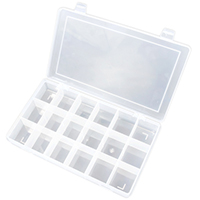Top Reasons Boats Fail, Vibrating too Much
Posted by Pacer on 18th Feb 2019

Top Reasons Boats Fail, Vibrating too Much

Everyone who’s been on a boat knows there is an expecting level of vibration. It makes sense as everything's in motion, but you can tell when there is too much vibration occurring. This is one of the reasons the parts need to be built to handle tough environments. Boats handle a lot more constant vibration than a car or motorbike will have to deal with. There is not only the motion of the motor and the boat moving, but the waves pressing against the boat and even strong wind have an effect. With that said, after you’ve been on a boat you know what normal vibration is and what seems like too much. If a vessel has too much vibration it is something that needs to be investigated. You may notice that the vibration gets worse the faster you go or that the engine is running too hard for the speed you’re going. The first place to look is the propeller. When a propeller has damage to its blades, it creates an imbalance which creates the vibration. Even small nicks or slight gouges can cause significant vibration. Unless you have a spare propeller, which most people don’t, you should concentrate on going slow and returning to shore as soon as possible. The longer your propeller is creating the vibration the more damage it is doing. This can lead to permeant engine damage and possible engine failure. Remember, going slow reduces the damage and is the safest course of action. Once you have a chance, raise your trim and look at your propeller. Make sure to inspect for even minor damage. Now, if your propeller does not have visible damage, look for a fishing line that has worked its way into the prop hub. Another possible cause could be a rubber bushing inside the hub has begun to fail. Regardless, if you don’t know what you're doing, it’s time to head back to shore and find a proper mechanic.
Prevention

Since you can’t predict when you’ll damage your propeller, the best course of action is to carry a spare propeller and all the tools needed to change it out. Carrying the proper tools is just the first step. Changing a propeller is not as easy as you may think it is. A smart idea is to practice changing the propeller at home before you are caught on the water trying to figure it out your first time. This simple step can make all the difference between getting back to shore safely or being stuck out on the water. Make sure to always inspect your propeller before taking your boat out. Being preemptive is the smartest way to stay on top of potential issues that may arise. This way, you can identify and address a minor problem before it becomes a major one.
Tools you'll need:
- A wrench that is designed to work with your specific propeller
- A pair of durable cut-proof gloves to handle the propeller
Corrosion can damage your propeller:

Over time all metals will eventually oxidize or corrode. This corrosion can and will eat away a metal surface and this includes your propeller. One way to prevent this is to use a chemical such as a rust inhibitor. The issue with many rust inhibitors is that they cannot stand up to harsh marine environments. How do you find one that can withstand such harsh conditions? Don't worry, we did the research for you. Corrosion-X is a lubricating, penetrating corrosion protectant that can withstand harsh environments. Seriously, NASA uses it on some of their spacecraft to give you an idea of how potent this stuff can be. If it can protect spacecraft, it can definitely protect your propeller.
Keeping small parts organized:
When you work on your propeller or similar boat part, you will undoubtedly run into small parts, lots of them. Screws, bushings, washers, you name it. When you're doing on the spot repairs such as replacing a propeller, the last thing you need is to lose a small part like a cotter pin. Take the worry and hassle out by carrying a specialized case designed for handling, transporting and protecting small parts. Trust me when I tell you this can be a lifesaver. Commonly used for terminals, its ideal for any small parts that you need to keep track of. Its slim size makes storage a simple task and it's snap down lid makes sure it won't come open on its own. Just one more way to be prepared when you're out on the water.

